Search
What are you looking for?

a. What is Swiss Machining?
Swiss machining, also known as Swiss screw machining or Swiss turning, is a highly precise and efficient machining process used in the manufacturing industry. It is particularly well-suited for the production of small, complex, and high-precision parts, often with tight tolerances. The process takes its name from Swiss watchmakers who originally developed and popularized this technique to produce intricate watch components.
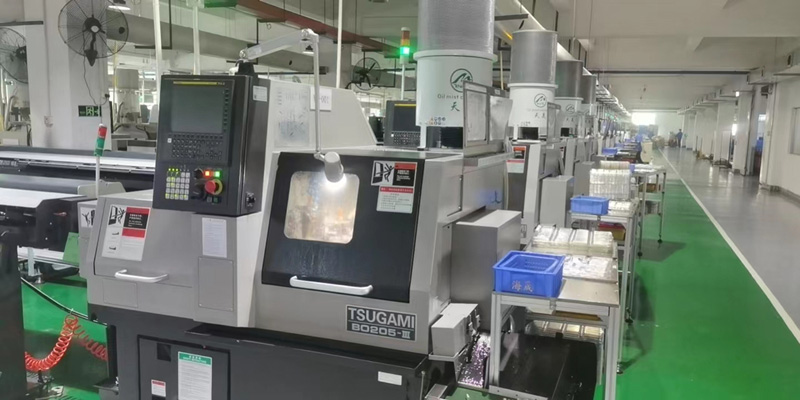
In Swiss machining, a workpiece is typically fed through a guide bushing, and a rotating cutting tool removes material from the workpiece to achieve the desired shape and dimensions. The guide bushing provides support and stability to the workpiece, allowing for exceptionally precise and intricate machining. This method is especially effective for long and slender parts, as it minimizes deflection and vibration during the machining process.
b. How Do Swiss Machines Work?
Swiss machines, or Swiss screw machines, are specialized machining tools designed for high-precision and high-volume production of small, intricate parts. They operate based on the principles of traditional turning and milling but with a unique configuration that sets them apart. Here's a step-by-step explanation of how Swiss machines work:
1. Material Feeding:
The process typically begins with a long and slender raw material, usually a metal rod or wire, which is loaded into the Swiss machine's spindle.
The material is guided through a guide bushing, which helps in maintaining its straightness and provides support during the machining process.
2. Tooling Setup:
Swiss machines have multiple cutting tools arranged around the material. These tools can move both axially and radially. The cutting tools are precision-ground and positioned close to the workpiece to minimize deflection and achieve high accuracy.
3. Turning Operations:
As the material rotates, the cutting tools perform turning operations by removing material from the outer diameter of the workpiece. The simultaneous movement of the cutting tools and the material enables efficient and continuous machining.

4. Milling Operations:
In addition to turning, Swiss machines can perform milling operations. This is achieved by moving the cutting tools radially to create features such as holes, slots, and intricate geometries.
The ability to perform both turning and milling in a single setup makes Swiss machining suitable for complex parts.
5. Coolant and Chip Management:
Coolant is often applied during the machining process to dissipate heat and improve tool life. Efficient chip management is crucial to prevent chip buildup and interference with the machining process.
6. Guide Bushing Operation:
The guide bushing, located close to the cutting tools, provides support to the material, minimizing vibration and deflection. The proximity of the guide bushing to the cutting point allows for higher precision in machining, particularly when working with small diameters and long lengths.
7. Automated Control:
Swiss machines are typically equipped with advanced control systems that allow for precise programming and coordination of tool movements. Automation features may include CNC (Computer Numerical Control) capabilities, tool changers, and bar feeders to enhance productivity and reduce manual intervention.
Swiss machining relies on specific processes and techniques to achieve high precision in the manufacturing of small, intricate parts. Here are the key elements involved:
1. Guide Bushing and Material Support:
The guide bushing is a critical component in Swiss machining. It provides support and stability to the material being machined, minimizing deflection and vibration during the cutting process.The close proximity of the guide bushing to the cutting tools ensures consistent and precise machining, especially when working with small diameters and long workpieces.

2. Simultaneous Machining:
One of the key features of Swiss machining is the ability to perform simultaneous turning and milling operations. This simultaneous machining reduces cycle times and enhances overall efficiency. The combination of axial and radial movements of cutting tools allows for the creation of complex geometries, holes, and features in a single setup.
3. CNC (Computer Numerical Control) Programming:
Swiss machines are equipped with CNC controls that allow for precise programming of tool movements. CNC programming ensures accuracy in tool positioning and control over cutting parameters.
Advanced CNC capabilities enable the creation of intricate part geometries with tight tolerances, contributing to the overall precision of the machining process.
4. Precision Ground Cutting Tools:
The cutting tools used in Swiss machining are precision-ground to exact specifications. This ensures consistency in tool dimensions and sharpness.High-quality cutting tools contribute to the achievement of tight tolerances and surface finish requirements.
5. Bar Feeding Systems:
Bar feeders are commonly used in Swiss machining to automatically feed long bars of raw material into the machine.
Continuous bar feeding reduces downtime between machining operations, contributing to higher overall productivity and precision.
6. Quality Control and Inspection:
Rigorous quality control measures are implemented throughout the machining process. This may involve in-process inspections, dimensional checks, and the use of metrology tools to verify part accuracy.Regular inspection ensures that the final parts meet the specified tolerances and quality standards.
By combining these processes and techniques, Swiss machining achieves high precision in the production of small, intricate components. The integration of advanced technology, precision tooling, and meticulous process control allows manufacturers to meet the stringent requirements of industries such as aerospace, medical devices, and electronics.
Precision Swiss machining holds significant importance in the manufacturing sector, particularly for industries that require high-precision, complex, and small components. Here are key reasons why precision Swiss machining is crucial:
1. Micro-Precision Capability:
Swiss machining is renowned for its ability to achieve micro-precision, producing small and intricate parts with tight tolerances. This is especially crucial in industries such as medical devices, aerospace, and electronics, where miniaturization is a key trend.
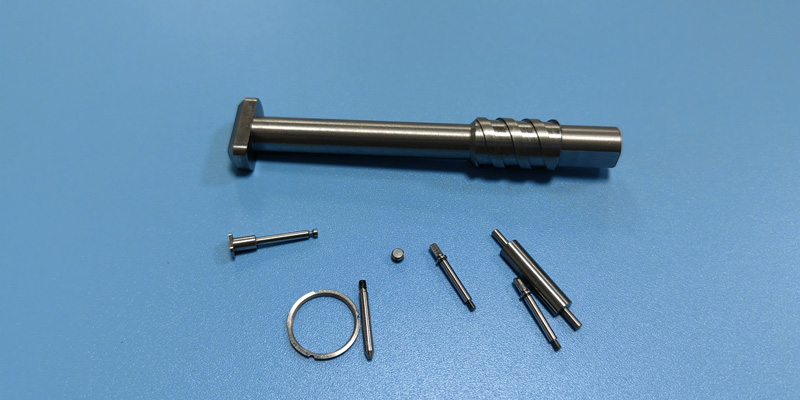
2. High Accuracy and Consistency:
Swiss machining ensures high accuracy and consistency in the production of components. The close proximity of cutting tools to the workpiece, supported by the guide bushing, minimizes deflection and vibration, resulting in parts with precise dimensions and surface finishes.
3. Complex Geometries:
The simultaneous turning and milling capabilities of Swiss machines enable the production of complex geometries in a single setup. This is essential for industries like aerospace and medical, where components often have intricate designs and features.
4. High Volume Production:
Swiss machining is well-suited for high-volume production of small components. The efficiency and speed of the process, combined with the ability to produce accurate and consistent parts, make it a preferred choice for industries requiring large quantities of precision components.
5. Optimized Cycle Times:
The simultaneous machining operations and the ability to work on multiple features in one setup contribute to optimized cycle times. This leads to increased productivity, making Swiss machining ideal for industries with demanding production schedules.
6. Reduced Secondary Operations:
The ability to perform both turning and milling operations in a single setup minimizes the need for secondary operations. This not only saves time but also reduces the risk of errors introduced during additional handling.
7. Quality Assurance:
Swiss machining incorporates rigorous quality control measures, ensuring that each part meets the specified tolerances and quality standards. This is essential for industries with strict regulatory requirements and a focus on product reliability.

Precision Swiss machining is indispensable in the manufacturing sector, especially for industries that demand small, complex, and highly precise components. Its capabilities in micro-precision, high accuracy, and efficiency make it a valuable technology for meeting the evolving needs of modern manufacturing.
Swiss machining parts find diverse applications across various industries due to their ability to produce small, intricate components with high precision. Some notable applications of Swiss machining parts in the manufacturing industry include:
1. Medical Devices:
Swiss machining is widely used in the production of medical components and devices. This includes surgical instruments, dental implants, orthopedic screws, and other critical parts where precision is paramount.
2. Aerospace Components:
The aerospace industry requires components with tight tolerances and high precision. Swiss machining is employed to manufacture parts such as connectors, bushings, shafts, and other critical aerospace components.
3. Electronics and Microtechnology:
In the electronics industry, particularly for the production of components in electronic devices and microtechnology, Swiss machining is essential. This includes connectors, pins, and other small parts used in electronic assemblies.
4. Automotive Components:
Swiss machining is utilized for the production of precision components in the automotive industry. This includes fuel injectors, sensors, valves, and other small parts that require high accuracy and consistency.
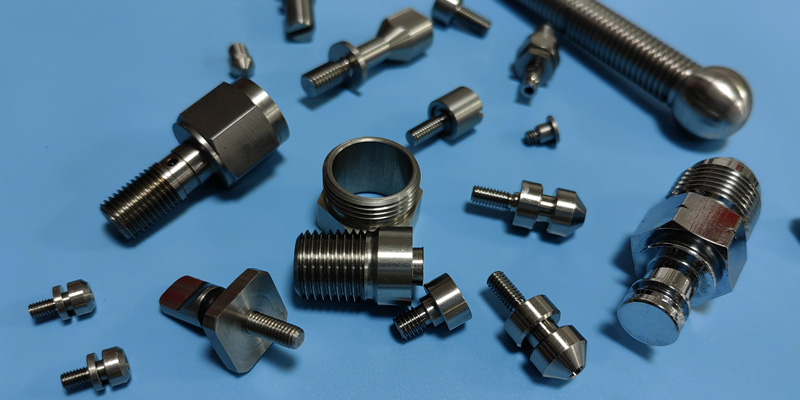
5. Watchmaking and Horology:
The origins of Swiss machining can be traced back to watchmaking, and it continues to be a crucial technology in this industry. Swiss machining is used for producing the intricate components of watches, such as gears, pinions, and screws.
6. Telecommunications:
The telecommunications industry relies on Swiss machining for the production of components like connectors, adapters, and pins used in communication devices and infrastructure.
7. Optical Components:
Precision optical components, including lenses, prisms, and mounts, are often manufactured using Swiss machining due to its ability to achieve high tolerances and smooth surface finishes.
8. Fluid Power and Hydraulics:
Components used in fluid power systems, such as hydraulic valves, nozzles, and fittings, benefit from the precision capabilities of Swiss machining to ensure optimal performance and reliability.
9. Electronic Connectors and Connective Hardware:
The manufacturing of electronic connectors and connective hardware requires precision to ensure reliable electrical connections. Swiss machining is well-suited for producing these small and intricate components.
The versatility of Swiss machining makes it a valuable technology across a wide range of industries where small, complex, and high-precision components are required. Its ability to handle various materials, maintain tight tolerances, and achieve excellent surface finishes makes Swiss machining an essential process in modern manufacturing.
Opting for high precision Swiss machining services in manufacturing offers several key advantages and benefits, making it a preferred choice for industries that require small, intricate, and highly accurate components. Here are some of the key advantages:
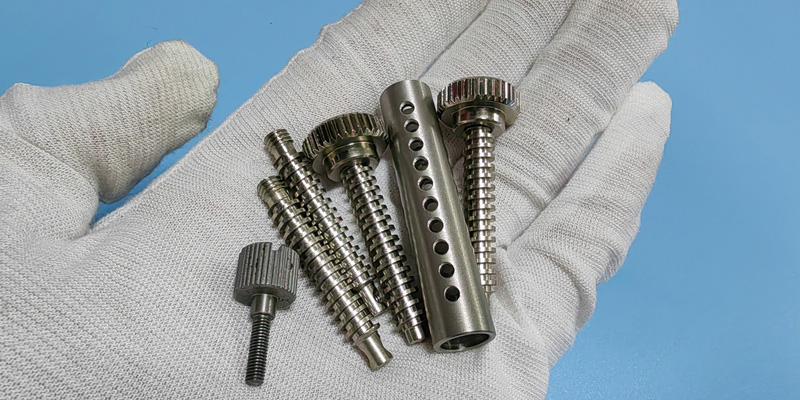
Micro-Precision Capability:
Swiss machining is known for its exceptional micro-precision capabilities, allowing for the production of extremely small parts with tight tolerances. This is crucial for industries such as medical devices, aerospace, and electronics where miniature components are prevalent.
Tight Tolerances and Accuracy:
Swiss machining can achieve tight tolerances and high levels of accuracy, ensuring that parts meet precise specifications. This is particularly important in industries where component fit and functionality are critical, such as aerospace and medical applications.
Simultaneous Turning and Milling:
The simultaneous turning and milling capabilities of Swiss machines in a single setup allow for the production of complex parts with multiple features. This reduces the need for additional machining processes and improves overall efficiency.
Reduced Material Waste:
Swiss machining incorporates continuous bar feeding, minimizing material waste. The efficient use of raw materials contributes to cost savings and aligns with sustainable manufacturing practices.
High Volume Production:
Swiss machining is well-suited for high-volume production of small components. The combination of precision and speed allows manufacturers to meet the demands of industries requiring large quantities of precisely machined parts.
Versatility in Materials:
Swiss machining can work with a wide range of materials, including metals, plastics, and advanced alloys. This versatility makes it suitable for various industries, from automotive to medical, where different material requirements exist.
Reduced Secondary Operations:
The ability to perform both turning and milling operations in a single setup minimizes the need for secondary operations. This leads to faster production times, reduced costs, and fewer opportunities for errors in additional handling.
Enhanced Surface Finishes:
Swiss machining processes often result in superior surface finishes. This is crucial for applications where the appearance and smoothness of the final product are essential, such as in the production of optical components.
Cost-Effective Production:
Despite its precision capabilities, Swiss machining can be cost-effective, particularly for high-volume production. The efficiency of the process, reduced material waste, and minimized secondary operations contribute to overall cost savings.
Complex Geometry and Intricate Features:
Swiss machining excels in producing parts with complex geometries and intricate features. This is advantageous in industries like aerospace, where components often have intricate designs and tight geometric requirements.
Consistency and Quality Control:
The close proximity of cutting tools to the workpiece, supported by guide bushings, ensures consistent machining. Rigorous quality control measures can be implemented throughout the process, maintaining a high level of precision and part quality.
Automation Integration:
Swiss machining can easily integrate with automation systems and robotics, further enhancing efficiency and reducing labor costs. Automated processes contribute to consistent production and quality control.
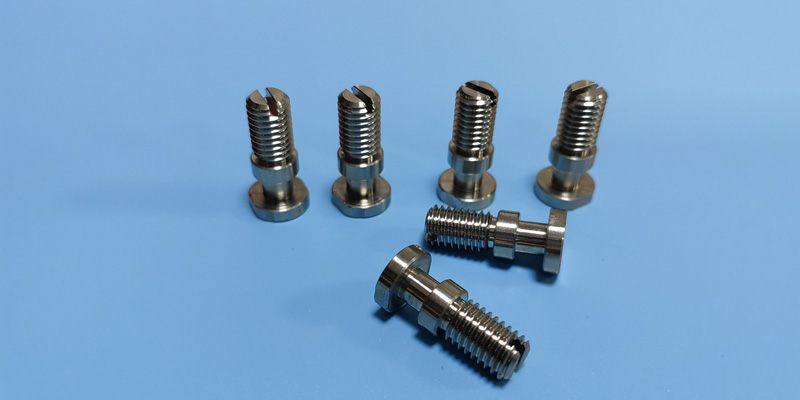
High precision Swiss machining services offer a combination of micro-precision capabilities, tight tolerances, efficiency, and versatility, making them advantageous for a wide range of manufacturing applications. Industries that prioritize precision, efficiency, and the production of intricate components often turn to Swiss machining to meet their specific requirements.
High precision plays a pivotal and defining role in Swiss machining, distinguishing it as a specialized and sought-after manufacturing process. Here are specific aspects highlighting the importance of high precision in Swiss machining:
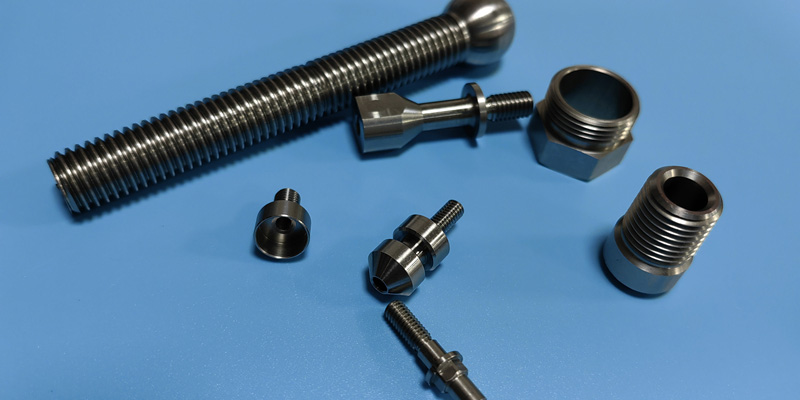
Tight Tolerances:
Swiss machining is known for its ability to achieve extremely tight tolerances. The close proximity of the cutting tools to the workpiece, supported by guide bushings, allows for precise control over dimensions. This is crucial in industries where components must meet strict tolerance requirements, such as aerospace and medical device manufacturing.
Micro-Precision Capability:
Swiss machining is uniquely suited for micro-precision manufacturing. It can produce extremely small parts with high accuracy, making it indispensable in industries where miniaturization is a key factor, including electronics and medical devices.
Reduced Deflection and Vibration:
The design of Swiss machines, with the guide bushing providing support close to the cutting point, minimizes deflection and vibration during the machining process. This stability is essential for achieving high precision, especially when working with small diameters and long workpieces.
Complex Geometries and Intricate Features:
High precision in Swiss machining allows for the production of components with complex geometries and intricate features. The simultaneous turning and milling operations enable the creation of sophisticated designs in a single setup, reducing the need for additional machining steps.
Consistent Accuracy Across Production Runs:
Swiss machining ensures consistent accuracy across large production runs. The process's repeatability and reliability are critical for industries that demand uniformity in components, such as automotive manufacturing or the production of consumer electronics.
Quality Control and Reliability:
The high precision achievable with Swiss machining contributes to the overall reliability and quality of manufactured parts. Rigorous quality control measures can be implemented throughout the machining process to verify and maintain the required precision.
Optimized Material Usage:
The efficiency of Swiss machining, coupled with the ability to achieve high precision, leads to optimized material usage. The process minimizes material waste, contributing to cost-effectiveness and sustainable manufacturing practices.
Enhanced Surface Finishes:
Swiss machining often results in superior surface finishes on machined parts. This is advantageous in industries such as optics, where smooth surfaces are critical for optimal performance.
Suitability for Advanced Materials:
High precision is particularly important when working with advanced materials such as titanium, superalloys, and ceramics. Swiss machining can handle these materials effectively, ensuring precise machining without compromising material properties.
Critical Role in Critical Industries:
Swiss machining's emphasis on high precision makes it indispensable in critical industries like aerospace, medical devices, and defense, where the reliability and accuracy of components are paramount for safety and performance.
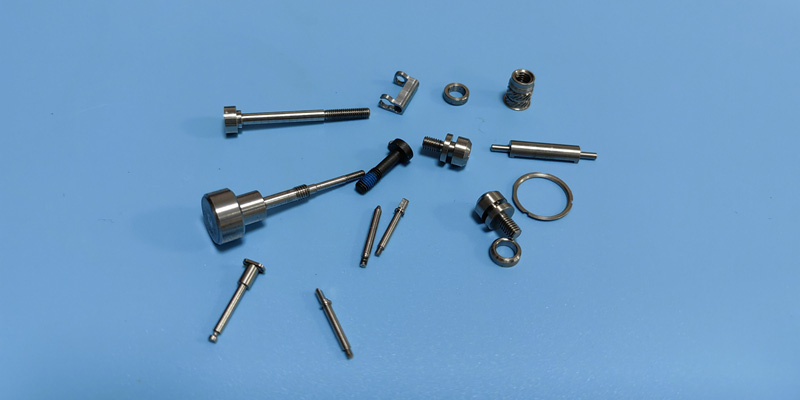
High precision is not just a desirable feature but a fundamental characteristic of Swiss machining. The process's ability to consistently achieve tight tolerances and micro-precision plays a central role in meeting the demands of industries requiring intricate, small, and highly accurate components.